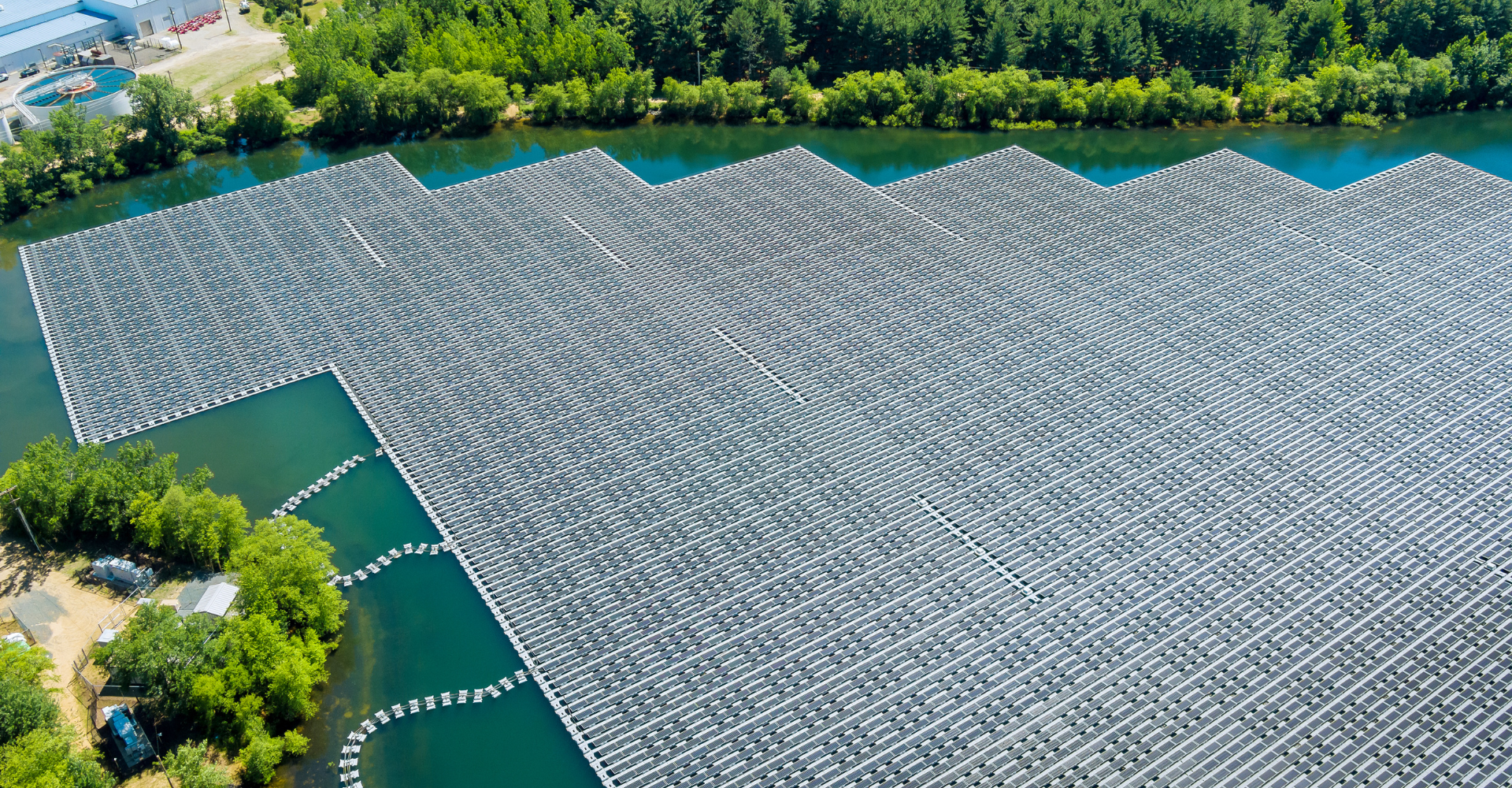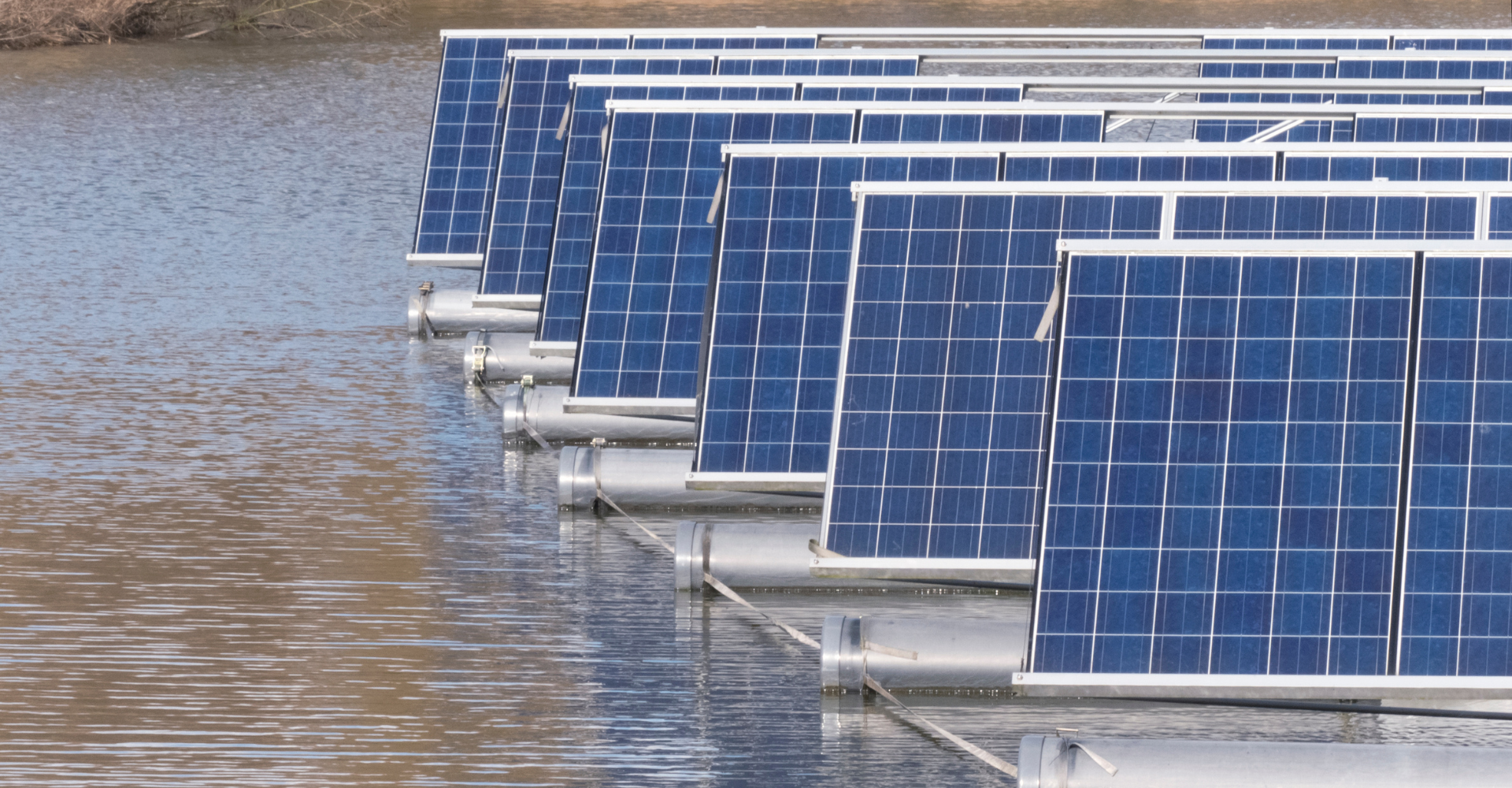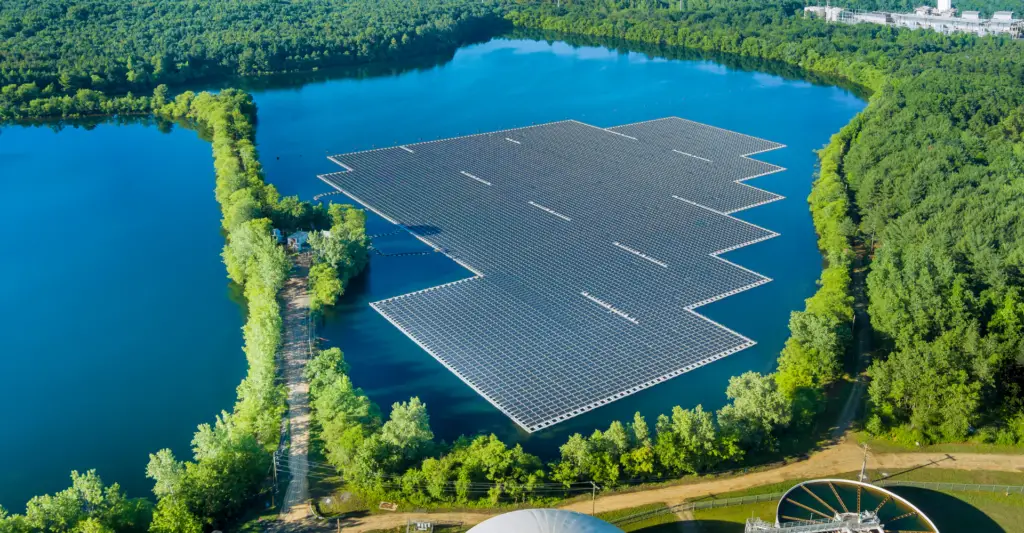Envision harnesses the immense energy of lakes and rivers for electricity while preserving their essential function in safeguarding nature. Floating solar panels brilliantly balance energy generation with water conservation, serving dual purposes without skipping a beat.
These innovative systems sit on the surface, reducing evaporation and keeping the water cool underneath for better efficiency.
This article dives deep into how these installations save water and crank up the energy output. Dive into global tales of triumph, grasp the ecological footprint, and witness the policy-driven embrace of this groundbreaking tech. Additionally, we delve into the synergy between different industries to advance this technology in pursuit of sustainability objectives.
Ready to see how floating solar panels can play a crucial part in our clean energy future while protecting precious water resources? Let’s dive in.
The Revolutionary Impact of Floating Solar Panels on Water Conservation
Floating solar panels are more than just a pretty face in the renewable energy crowd. They’re like undercover agents in water conservation, tackling evaporation one reservoir at a time.
Conserving Water in Reservoirs and Lakes
Imagine vast expanses of water under the sun, slowly disappearing. Now, picture those same bodies covered with floating solar panels. These innovative solutions minimize surface evaporation from our precious lakes and reservoirs. It’s a game-changer for regions where every drop counts. Shading techniques drastically reduce the water that vanishes into thin air, securing a larger supply for consumption, agriculture, or sustaining nearby nature.
Globally, this strategy has shown its worth in numerous extensive applications, demonstrating remarkable efficacy.
Enhancing Efficiency with Cooler Temperatures
Besides guarding against evaporation, these floating marvels have another trick: keeping things cool. Solar cells love cooler temperatures; it makes them work better and last longer. TheSolarUpgrade.com delves into how lower temperatures bolster efficiency by allowing photovoltaic cells to absorb sunlight more effectively without overheating.
This dual benefit—conservation plus efficiency—highlights why floating solar technology is pivotal not only for generating clean energy but also as stewards of our most valuable resource: water.
The Home Upgrade plays a crucial role in this innovative approach, offering solutions that harness the power of floating solar technology to maximize energy production while minimizing water evaporation from reservoirs and lakes. Their expertise and commitment to sustainable energy solutions emphasize the importance of adopting renewable technologies that benefit the environment and future generations, making The Solar Upgrade a key player in the transition towards more efficient and responsible energy use.
The Global Success Stories of Floating Solar Projects
Floating solar technology is not just a wave; it’s an ocean of opportunities. This groundbreaking approach has been spreading worldwide, showcasing the dual benefits of preserving aquatic environments and producing renewable power.
One notable success story comes from Japan, where floating solar panels have turned reservoirs into power plants without compromising their primary purpose. With these structures blanketing the water, they cut down on evaporation and keep the waters below chillier, thereby boosting their performance.
In Singapore, the world’s largest floating photovoltaic system showcases another benefit: land conservation. In areas teeming with people and limited space, floating solar panels emerge as a savvy approach to hitting renewable energy goals without giving up precious land.
Conserving Water in Reservoirs and Lakes
Amidst the relentless advance of climate change, lakes and reservoirs serve as vital lifelines for farming and quenching thirst, yet the specter of evaporation perpetually besieges them. Here’s where floating solar steps in as a hero by reducing direct sunlight exposure on water surfaces, significantly cutting down evaporation rates.
This dual functionality means that countries with large agricultural sectors or those prone to drought can safeguard their water resources while simultaneously jumping onto the renewable energy bandwagon.
Navigating the Waters: Environmental Impacts of Floating Solar Panels

Tech-savvy frogs’ lily pads, floating solar panels form a protective canopy above aquatic realms, not only harvesting sunlight but also safeguarding the waters beneath. But as with any new technology making waves, it’s important to ask how it interacts with their aquatic playground.
One key benefit these floating marvels offer is water quality preservation. By casting shadows over the water, they substantially lessen the amount of water lost to evaporation. This means reservoirs and lakes keep more of their precious H2O, which is especially critical in areas where every drop counts. A study highlighted on TheSolarUpgrade.com shows that installations can save millions of gallons over time.
Yet, delving into the effects on water habitats reveals a nuanced perspective; while we champion these installations for preserving vital H2O, they also cast shadows over aquatic ecosystems that could disrupt the delicate balance needed by sunlight-loving underwater dwellers. The shade cast by these panels might be too much of a good thing for some underwater residents who thrive under direct sunlight. Research indicates varying effects on algae growth and water temperature – both crucial factors for healthy ecosystems.
To sum up, while floating solar panels herald an exciting era of dual-purpose renewable energy sources – generating electricity while conserving water – understanding their environmental footprint requires careful consideration and ongoing research.
Policy Frameworks Fueling the Adoption of Floating Solar Technology
Government policies, regulations, and incentives are not just pieces of paper; they’re powerful tools shaping our energy future. They lay down the red carpet for innovations like floating solar technology to glide into mainstream adoption.
This push isn’t happening in a vacuum. With water conservation becoming increasingly crucial, floating solar panels present a dual-purpose solution: generating clean energy while preserving precious water resources by reducing evaporation from reservoirs and lakes. It’s an elegant answer to two pressing environmental challenges.
In places where space is at a premium yet there’s plenty of water, this innovation has transformed constraints into chances for growth. Projects that have taken off under supportive policy environments demonstrate significant savings on water as well as increased efficiency due to cooler operating temperatures—a win-win scenario endorsed by both nature lovers and tech enthusiasts alike.
Fostering Innovation through Cross-Sector Collaboration
When it comes to floating solar panels, the magic happens when different sectors team up. Imagine it as an assembly of superheroes, each wielding their distinct abilities for a common cause. This isn’t just about throwing technology on water and hoping for the best. This endeavor aims to blend the expertise of technology aficionados, ecological researchers, legislators, and community members into a cohesive force.
This collaboration is crucial because no single sector has all the answers. For example, tech experts might know how to make solar panels more efficient but may not understand their impact on aquatic ecosystems. That’s where environmentalists step in. Learn more about these collaborations here.
Government agencies are crucial, too, crafting regulations that both spur creativity and safeguard the environment. They can offer incentives for clean energy projects or streamline approval processes so good ideas don’t get bogged down in red tape.
Floating Solar Panels as Catalysts for Sustainability Goals

Picture our water bodies, like lakes and reservoirs, multitasking in a vibrant future where they cradle water while simultaneously harvesting pristine energy. This isn’t a scene from a sci-fi movie; it’s the reality we’re moving towards with floating solar panels.
Floating solar technology is making waves by turning water bodies into power plants without compromising their primary role in conservation. By offering shade, these structures play a vital role in cooling the water and minimizing its loss to evaporation, a key factor for regions grappling with drought or limited water resources.
Conserving Water in Reservoirs and Lakes
In large bodies of water like reservoirs and lakes, floating solar panels are proving to be effective warriors against evaporation. By covering the surface, they shield the water from direct sunlight, significantly reducing how much evaporates into thin air.
This setup not only preserves precious freshwater resources but also churns out electricity—killing two birds with one stone.
Enhancing Efficiency with Cooler Temperatures
Solar cells love cooler temperatures because they operate more efficiently when they’re not overheating. Floating atop waters keeps them naturally chilled due to constant contact below—boosting performance without needing extra cooling systems.
The added efficiency means that these floating powerhouses can generate more electricity than their land-lubbing counterparts under similar conditions—a win for both sustainability goals and our ever-growing thirst for renewable energy sources.
The Blueprint for Success in Floating Solar Ventures
For floating solar projects to really take off, three things are key: planning well, getting the community on board, and having solid policy support. It’s like baking a cake without forgetting any of the ingredients.
Comprehensive planning is your recipe here. This means looking at everything from environmental impacts to how you’ll connect to the grid. Think about it as mapping out your route before a road trip—you need to know where you’re going and what stops you’ll make along the way.
But even with the best plan, if people living nearby aren’t happy, you’re heading for rough waters. That’s why community involvement is so crucial. Engaging with the community and tweaking your initiative according to their insights is key. Imagine trying to throw a party but not considering if your neighbors enjoy loud music—it’s better when everyone’s on board.
Last but definitely not least is policy support. Governments can either open doors wide or slam them shut tight for renewable energy projects like these. Having policies that encourage innovation and sustainability can fuel growth faster than caffeine does during finals week.
Conclusion
Thus, our journey has uncovered the promising horizon where floating photovoltaic arrays safeguard precious water reserves. Key takeaways? Floating solar panels not only generate power but also play a significant role in conserving water, creating a dual benefit for our environment.
They slash evaporation, keep our waters cool, and bump up efficiency. Around the globe, success stories shine light on their vast benefits.
Policies matter. These advancements are the driving force behind the expansion of eco-friendly technology sectors. And remember: collaboration is key to pushing these innovations further towards sustainability goals.
In wrapping up, let’s not forget how vital these advancements are for meeting global clean energy and water conservation targets.
If you’re aiming for a sustainable future or just intrigued by cutting-edge tech that helps our planet—floating solar panels have got your back.








